Book Review: The Four Hour Body
I have to say, I was a little more than skeptical about this book when I first heard about The 4-Hour Body. Here was a guy who wrote The Four Hour Workweek, an instant classic on stream-lining work productivity and creating passive income to live the life you want, writing about what he calls “hacking the human body.”
Business training teaching science is more often than not a hit-or-miss finished product. However, you can’t deny the guy knows a thing or two about performance. He’s a world champion tango dancer, national Chinese kickboxing champion, competitive breakdancer, and has lectured around the world at major events and educational/corporate institutions, making some serious coin along the way. He’s helped change the way people use the internet to make money, to invest, and to build a brand, and on top of that he’s a fitness fanatic.
My first thought was along the lines of “Who the hell does this guy think he is? He has no formal training in the area of exercise physiology or nutrition or anything pertaining to that area. It would be like me writing a book on business practices!!” Then I looked at the book shelves at the local Chapters outlet in the health and exercise section, and figure if some of the most popular exercise books out right now were written by people like Jillian Michaels, The Situation, and a few other celebu-tards with the collective intelligence of a dust ball, as well as the fact that there are a lot of “trainers” out there with questionable credentials giving questionable advice, I figured he would be worth a listen.
To his credit, Tim has done his research. Having a near-endless supply of money can help a lot in his pursuit for information, as he traveled the globe talking to some of the best in the world, from doctors, to physiotherapists, to researchers to strength coaches. He’s had hundreds of blood tests, MRI’d pretty much his entire body multiple times over, bought testing equipment, and used himself as a veritable guinea pig for any theory out there involving health, body composition change, and strength improvements, so to give him credit, he may not have the formal education in this arena (he has a BA in Neuroscience), but he’s done more research and experimentation than some do in a lifetime, so I’ll give him “street cred” for that.
I thought that instead of giving you a generic book review, I’d walk you through this book and give it some narration as well as insight on sections I got some good knowledge from, as well as those that I think he jumped the shark on. So here we go!!
1. FUNDAMENTALS – FIRST AND FOREMOST
This was probably one of my favorite parts of the book. He’s a huge nut for the “80/20 Rule,” and if you’ve never heard of it, I would definitely recommend picking up Richard Koch’s book, “The 80/20 Principle: The Secret to Achieving More with Less.” Ferriss also talks about the minimal effective dose for anything to produce an effect, including exercise, medications, supplements, etc. It’s an overlying theme for the rest of the book, so definitely pay attention.
2. GROUND ZERO – GETTING STARTED AND SWARAJ
Here he details how in many cases, looking just at the scale is not going to tell you anything, especially if it means looking at the difference between weight lost from fat versus weight gained from muscle. Amazingly, it’s almost like something me and every other trainer worth their Lulu Lemon pants has been shouting to people who obsess over the scale for years!! He went to the extreme of getting his body fat tested using pretty much every piece of technology out there, and also outlined the pros and cons of each. I’ll admit, there were a few on there I wasn’t even aware of, which shows how fast technology adapts and new stuff comes out all the time.
He also uses a principle that I can definitely attest to when it comes to people achieving goals: Motivation. He shows how measuring goals produces the biggest effect on your motivation to achieve them, whether it’s losing body fat, gaining muscle, pushing more weight or running faster. I always ask hesitant clients who don’t want to have their measurements taken “Why are you here??” Inevitably, they will say to lose body fat or whatever, and I’ll almost always counter by simply stating “How do you know how you’re doing without measuring progress?” Simple. You don’t You’re walking blind in the dark and hoping that when the lights come on you’ll be where you want to end up.
Measurements are key to tracking progress. What gets measured gets done.
Now time for the nitty gritty. Ferris talks about something he calls the “Slow Carb Diet,” which is essentially a low carb diet where the carbs come from veggies and beans/lentils, high protein and high fibre, while allowing one cheat day per week to gorge out and make yourself as sick as possible with everything nasty imaginable. Nothing new here, folks, pretty standard issue. The concept behind this is to reduce the input of high-calorie starches and sugars that play havoc on your blood sugar and ability to store and burn fat tissue, while allowing one day of high calorie input to allow for a re-fueling of your muscle and liver glycogen, and up-regulation of thyroid and adrenal hormones, which need an input of some sugars and saturated fats to work properly.
He then talks about supplementation to increase the rate of fat loss, including his personal history of what has worked, and what didn’t I have to admit, I’ve never been a big supplement guy, especially considering how un-regulated the entire industry is and how much faith you need to put into the manufacturers that they are putting what they claim into each container, and ONLY what they claim instead of some proprietary blend that will end up making you feel like a humming-bird on crack or get juiced up with a little extra “Vitamin S” that they slipped in to get you unreal results and addicted to their product.
I’ll climb off my soap box now, thanks for listening
The only ones that struck me as interesting were the green tea flavanols and the garlic extract, two products I have long-known for their fat loss capacity, but mostly just ignored. I think I’ll try the garlic one, as well as adding cinnamon to my breakfast each morning. Couple the garlic with the eggs and the beans, and Lindsay may need to leave the house for a few weeks at a time while it airs out.
 In the advanced section, he tipped a point of interest for me when he discussed thermodynamics and the concept of cooling for promoting fat burning. We’re always talking about “burning calories,” but we seem to always miss one of the central caveats of mammals: we’re warm-blooded and will always burn calories to maintain a specific body temperature. Shouldn’t cooling the body make it work harder to increase core temperature while getting the fuel source from adipose tissue? The answer would seem possible, and would explain another reason why swimmers are a lot leaner than most, being submerged in lower-than-core-temperature water while exercising. The physics would seem to work in favor of cold for fat loss, but damn, dude!! I live in Edmonton and it’s pretty freakin cold here!! Cold exposure isn’t fun or easy, so maybe we’ll need to do something else.
In the advanced section, he tipped a point of interest for me when he discussed thermodynamics and the concept of cooling for promoting fat burning. We’re always talking about “burning calories,” but we seem to always miss one of the central caveats of mammals: we’re warm-blooded and will always burn calories to maintain a specific body temperature. Shouldn’t cooling the body make it work harder to increase core temperature while getting the fuel source from adipose tissue? The answer would seem possible, and would explain another reason why swimmers are a lot leaner than most, being submerged in lower-than-core-temperature water while exercising. The physics would seem to work in favor of cold for fat loss, but damn, dude!! I live in Edmonton and it’s pretty freakin cold here!! Cold exposure isn’t fun or easy, so maybe we’ll need to do something else.
After that, Ferriss kinda jumps the shark. He decided to purchase a real-time blood sugar monitoring kit to test his blood sugar at consistent intervals to see whether meals or starvation would affect it very much. He found his blood sugar stayed pretty reasonable consistent after each trial, which left him kinda flabbergasted, but I figure he forgot something pretty important here. See, if someone doesn’t have diabetes, their blood sugar is kept pretty consistent due to the effects of the pancreas and hormones like insulin and glucagon, which lower and raise blood sugar as needed, respectively. If he wasn’t diabetic, he should have seen very little fluctuation, regardless of his meals. Chock one up to me!!! It’s still a pretty cool section, but I wanted to point out the obvious elephant in the room with this chapter.
4. ADDING MUSCLE
Here he discusses the difference between resistance training and cardio for maintaining and gaining muscle mass (duh), as well as outlining a program for working out only 4 hours a month and making muscle gains and fat loss possible.
 He gives some good exercises, like the kettlebell swing, and some good effective ab exercises, but the overall premise of the chapter regards muscle gain using concepts like High intensity Training (HIT) popularized by guys like Mike Mentzer and Dorian Yates, but it’s something I would caution people in trying, as the intensity can most of the time lead to compensation, increased risk of injury, and other negative side effects of being awesome. If you’re cool with this, and have some experience lifting weights, give’er bro!!
He gives some good exercises, like the kettlebell swing, and some good effective ab exercises, but the overall premise of the chapter regards muscle gain using concepts like High intensity Training (HIT) popularized by guys like Mike Mentzer and Dorian Yates, but it’s something I would caution people in trying, as the intensity can most of the time lead to compensation, increased risk of injury, and other negative side effects of being awesome. If you’re cool with this, and have some experience lifting weights, give’er bro!!
The outline of his “Occam’s Protocol” workout is an exercise in simplicity itself, prescribing only one workout every three to four days, and maximizing recovery time between workouts to stimulate as much growth as possible. Healthy? Not the most, but if you’re only concern is getting as jacked and diesel as possible, you’re not concerned with such things as health anyway!
5. IMPROVING SEX
I have no problem with this, so I skimmed through most of it. **High fives every guy in the room, then walks out triumphantly and slams the door for added effect, bringing every girl within earshot to their knees** It basically focused on technique and most of the Cosmopolitan variety information about making the environment perfect and living up to the rom-com expectations blah blah bliddity blah.
The only nugget I got from this was the part about cell phones in your front pocket and decreased sperm count. Guys, if you’re looking to have a little Iron Monster running around in the near future, ditch the cell phone for a few weeks, or your swimmers might get some cramps and sink to the bottom of the pool. Capiche??
This got my attention right away, as it’s kinda my thing. Here, Ferriss essentially documents some of the treatments he’s tried on his injuries that have been good, great, and less than mediocre. Some of the ones I was most familiar with include ART, prolotherapy, and some of the movement-based therapeutic modalities. He also discusses the use of anabolic steroids for rehabilitation versus their common use as anabolic agents for recreational use, which is a good line to draw in the sand. He talks about going to a Charles Poliquin seminar where he essentially “fixed” his shoulder with one treatment of ART, and how much fun this can be. For those who have encountered ART, you probably picked up on my sarcasm here. All in all, I don’t think this section offered much advice for anyone, as it laid out all the treatments, but didn’t say what they would be best for (tendinitis versus bursitis versus tendinosis??), nd essentially said to go to the doctor and see what they say. I think he kinda dropped the ball here and could have really expanded this section in the same way he did with the body fat and muscle-building sections, but whatever.
He also discussed the Functional Movement Screen, which I have used for years, and goes into a full-blown ad for Gray Cook’s methods and training for his “Pre-Hab” section. Not to discredit Cook whatsoever, as he is one of the best in the biz, but I think there is definitely a bigger emphasis on the physio end of things for what he does than there is on producing strong movements with a powerful base of support. granted, there is a need for it, but I think the industry is starting to lean too far in the pre-hab direction from a physio’s perspective and not doing enough about pre-hab from the strength and conditioning perspective by teaching proper movement execution and technical progressions to prevent injuries while simultaneously improving performance and strength. But that’s a topic for a later post.
6. RUNNING FASTER AND FARTHER
By far, this was the one section I was looking forward to the most, and the one I was most disappointed with. Ferriss went to train with Joe DeFranco, who trains a lot of the draftees for the NFL combine to get them into the big leagues, and learned how to sprint, jump and perform better. Essentially it boiled down to the fact that he wasn’t technical in his approach, Joe fixed some technical faults, he got better and the villagers rejoiced.
He then went to learn how to run ultra-marathons, and for whatever reason decided to enlist the CrossFit mentality of training fast and short to produce benefits, under the theory that increased loading velocity and reduced stimulation increased the ability to run. Cross Fitters have taken a lot of heat for their methods for years, and this is one that is no exception. I’ve had to fix a lot of people who have tried this approach to marathons and ultra’s over the past few years, and most of them wind up burnt out for a few months or even years because they didn’t acclimatize themselves to the distance properly. Normally if I have someone looking to do a marathon, it’s a two-year process to make sure they don’t break themselves down into a finely ground powder on the side of the road from the pounding they’re going to take, so this isn’t an approach I would recommend to many. Sure, there are freaks of nature that can adapt to it, so this program would be for that 2.5% of the population.
However, I did find some good stuff in his Effortlessly Superhuman section, outlining getting stronger and lifting more weight. I tried some of it, and trust me, it’s good stuff.
I skipped through the swimming section and the baseball swing section and the hold-your-breath-in-case-of-a-fart section, because in all honesty, I could care less. If that’s your thing, go nuts, but I can’t speak to the validity of either or whether he hit the nail on the head or took one for the team.
So in conclusion, I would say that this is definitely an enjoyable book, but it has a few gaps and flaws to it, as all do. I am sure there will be a lot of people out there who see some amazing results from his programs and recommendations, and to that I definitely commend him. I also think there will be a lot of people who take it to the extreme and injure themselves trying some of these things, which is inevitable because there are always some people out there that are just plain stupid. Still, it’s a good read and definitely worth the bucks it charges. If you want a copy of it, you can get one HERE.
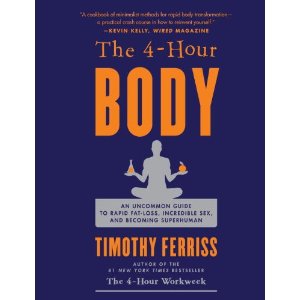
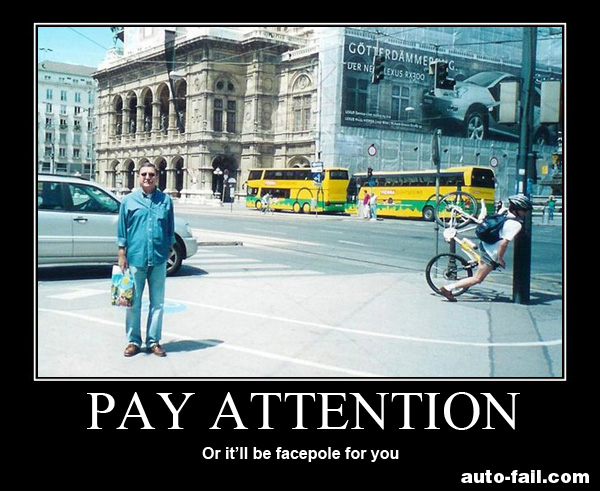
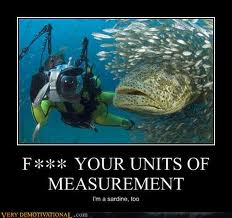
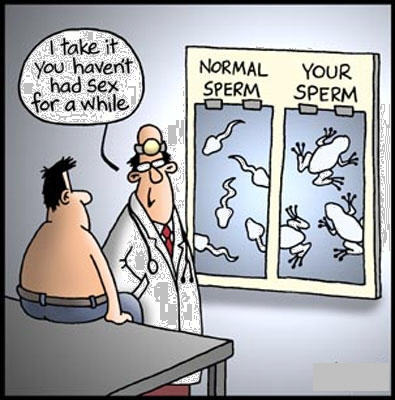
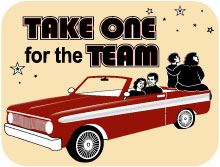
2 Responses to Book Review: The Four Hour Body